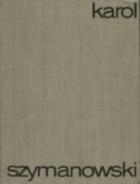Par SZYMANOWSKI KAROL. (VII) The Polish idiom appeared in Szymanowskis music in 1920, foreshadowing the beginning of a new period of creativity, later called nationalistic. Before this idiom was realised and such compositions typical of the Polish style as the ballet Harnasie, the Mazurkas, Stabat Mater, Fourth Symphony and Second Violin Concerto had been written, the change in musical thinking and the first experiments in the new language took place in songs. Symptoms of the new style manifested themselves fully in Slopiewnie, Op. 46 bis, composed in the summer of 1921 and published by Universal Edition. In these bizarre songs to bizarre words by Tuwim Szymanowski attempted to crystallize and generalize artistically some primaeval Polish, racial as he described them elements in music. The inspiring factor was undoubtedly the text by Julian Tuwim, abounding in new-coined words and imbued with its own music. It indicated the direction that artistic creativity was to take, and made the full corellation of the verbal and musical layers possible in, as Mieczyslaw Tomaszewski has stated, all the planse of co-operation phonic, structural, expressional and semantic. Based on A. Neuer Commentary to Complete Edition Volume C11 (VIII) Szymanowski did not yield to the temptation of easy over-stilization. Streching out to the deepest ethnic layers of his native musical culture, he made an attempt to mould and suitably fashion a Polish style of musical utterance. This tendency is apparent in the Three Lullabies, Op. 48, to words by Jaroslaw Iwaszkiewicz, composed in 1922 and published by Universal Edition in 1926. In the Lullabies we can find the confirmation of the fact that utterly new atmosphere which, according to the composer, Slopiewnie had introduced into his music, was not a once-for-all phenomemon. The elements of the new musical language, analised in connection with the earlier cycle, may here be regarded as assimilated. These are modalities in vocal melodies (Lullaby I) and cadences (Lullabies I and III), a bourdon effect with a tritone (Lullaby II). However these sometimes sligh and apparently unimportant details recur constatnly, an so acquire the nature of a definite compositional technique establishing a style based in an increasing degree on nationalistic elements. Based on Adam Neuer Commentary to Complete Edition Volume C11 (IX) The Childrens Rhymes, Op. 49, a cycle of twenty short songs by Kazimiera Illakowicz, composed in 1922-23, were a completely new creative experience for Szymanowski. He composed the Rhymes with his 11-year-old niece in mind. She was the daughter of Stanislawa Korwin-Szymanowska, who performed these songs for the first time in Warsaw on 25 February 1924. / Date parution : 2021-12-09/ Recueil / Chant et Piano
EUR 72.61 - See more - Buy online
 (EUROPEAN COMPANY)
(EUROPEAN COMPANY) 
